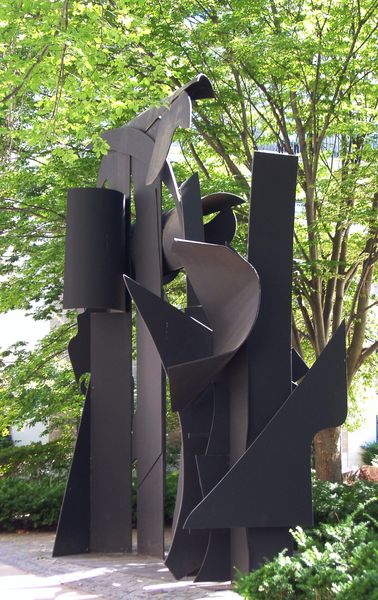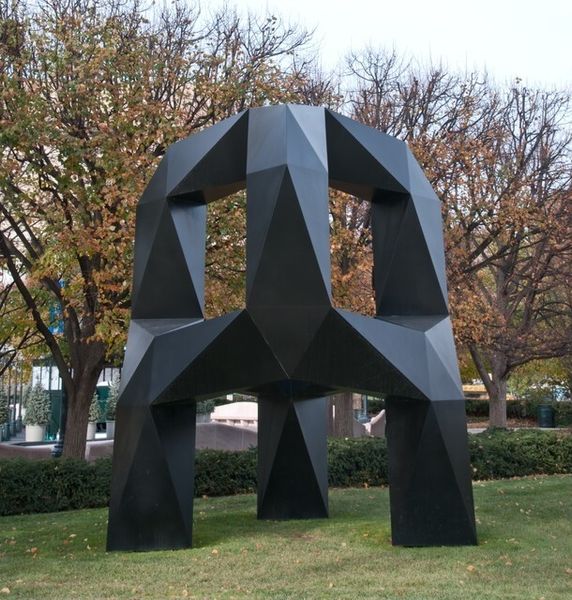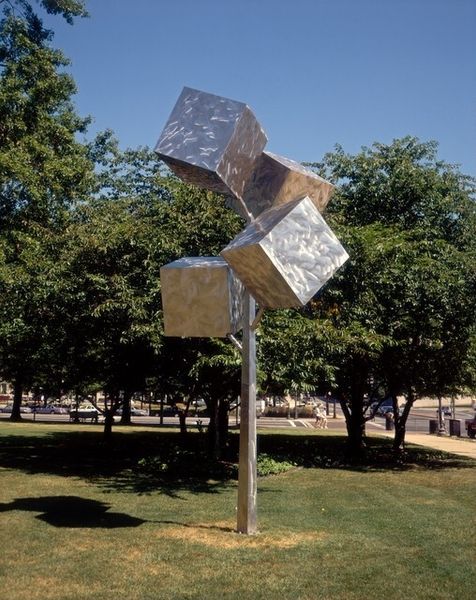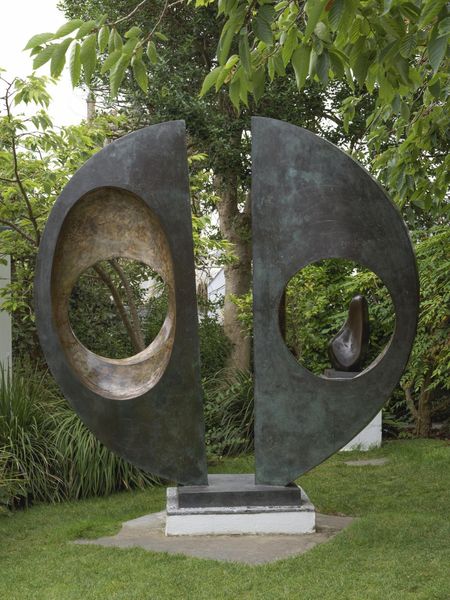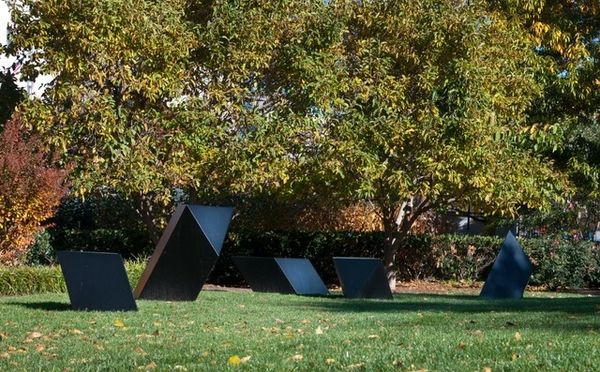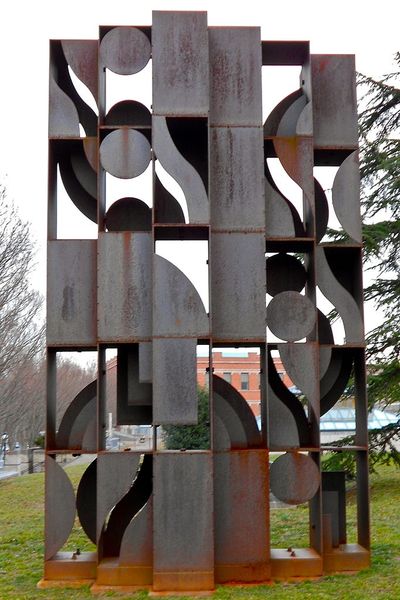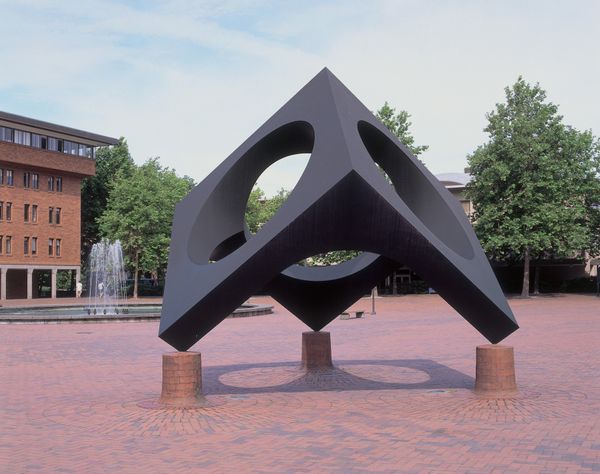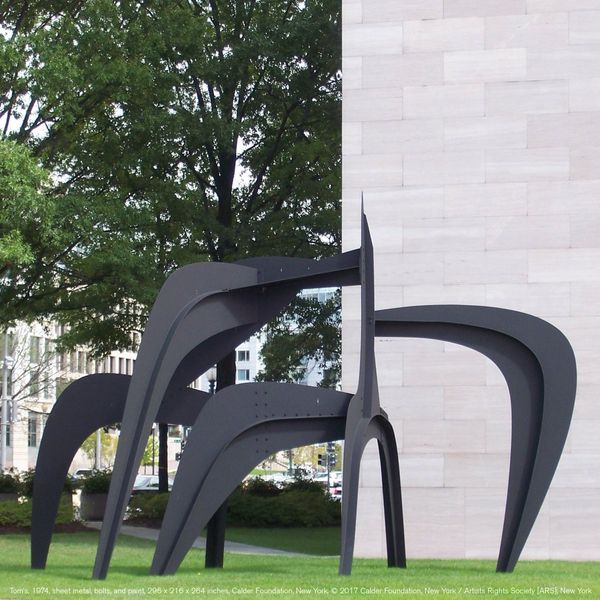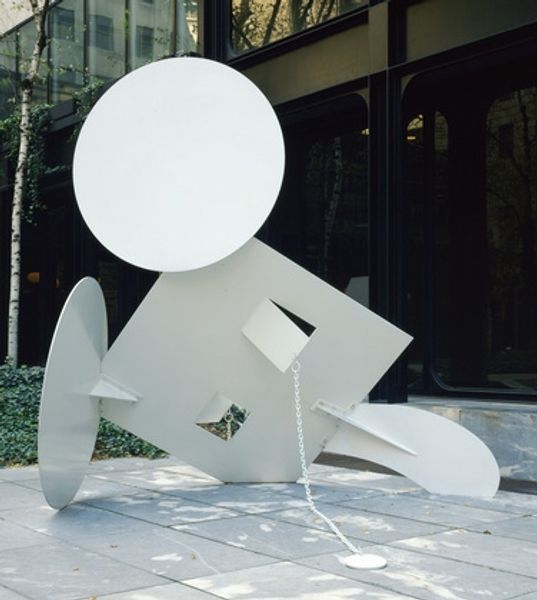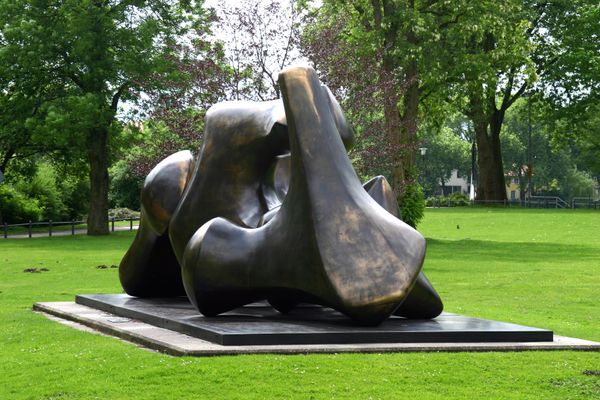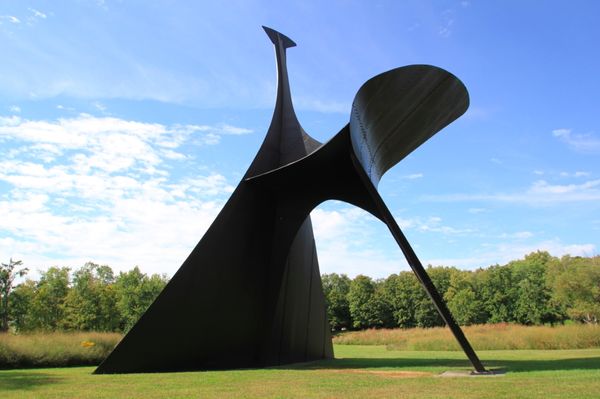
metal, public-art, sculpture
#
public art
#
contemporary
#
metal
#
street art
#
public-art
#
building art
#
geometric
#
sculpture
#
urban art
#
technology juxtaposition
#
abstraction
Copyright: Douglas Abdell,Fair Use
Editor: This is Douglas Abdell's "Kryeti-Aekyad #3" from 1980, a metal sculpture placed outdoors. I am intrigued by the almost brutal simplicity of the geometric shapes and how they intersect. What stands out to you in terms of its significance? Curator: Considering the period, let's focus on the artist's conscious manipulation of material and labor. Abdell worked during a time of post-industrial anxiety, yet embraced industrial materials like metal for monumental public works. This piece defies the tradition of bronze monuments celebrating historical figures; instead, it's an abstract, almost architectural statement. Does the use of geometric shapes evoke a sense of mass production or handcrafted labor in your opinion? Editor: It does feel like a bridge between the two. The repeated geometric units suggest factory production, but the rough finish and imperfect assembly hints at the human element. I’m also curious about the title "Kryeti-Aekyad". Do you think this has significance in relation to the materials and process? Curator: Precisely. The cryptic title hints at something outside the purely formal, perhaps alluding to a specific cultural or linguistic context absent from the work itself, creating a tension. Do you believe this obscurity intentionally separates the work from traditional narrative interpretations and centers it more on the immediate experience of form and material? Editor: Yes, definitely. The mystery encourages a focus on the raw presence of the metal itself and the impact of the sculpture's form on its surroundings. The social context of this being placed in a public space emphasizes a shared material encounter. Curator: Indeed. It moves beyond passive aesthetic contemplation, engaging with the viewer through scale, texture, and sheer physical presence within an accessible, social arena. Its creation then embodies a conscious interplay between artistic agency and communal interaction. What have you gained in examining how these material and process implications have reshaped our view of this artwork? Editor: Considering your points, it's shown me how analyzing the material choices and means of production shifts our focus from a singular artistic vision to the sculpture's role in shaping public experience. Thank you for your insights. Curator: My pleasure. Exploring these processes provides valuable frameworks for understanding an artist's practice and an artwork's impact.
Comments
No comments
Be the first to comment and join the conversation on the ultimate creative platform.
